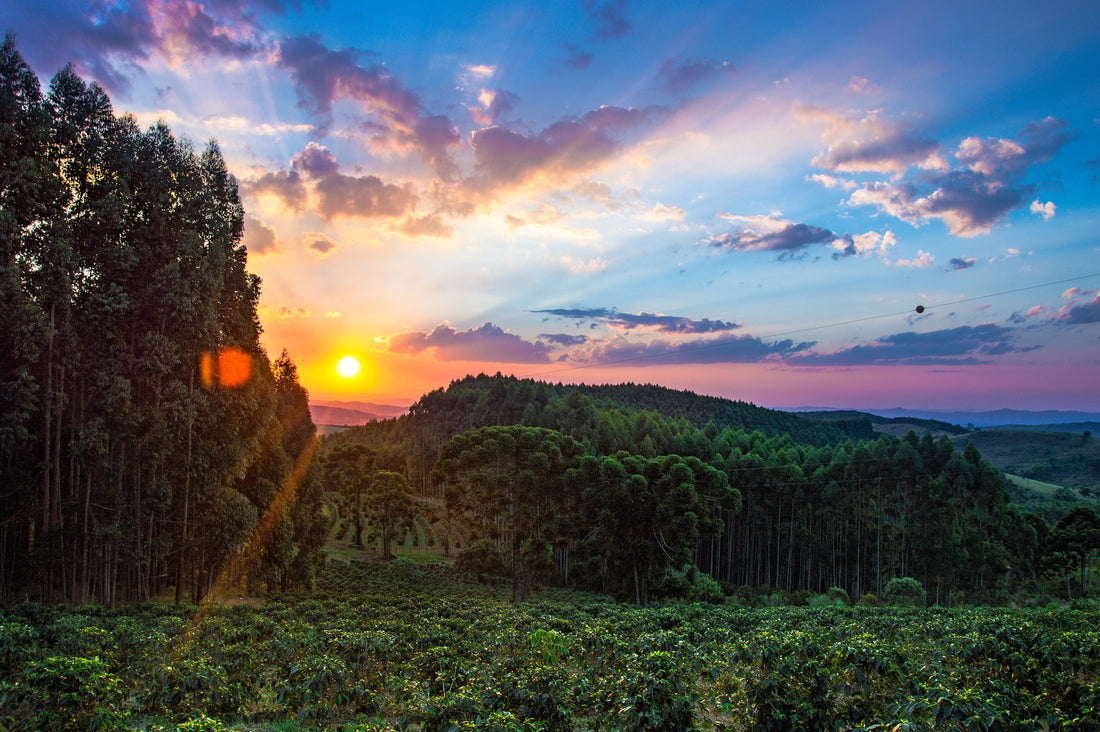
You Can't Grow Coffee in Your Backyard
Share
If you spend enough time in the coffee industry and you’ll hear people ask, “why is coffee not grown on the mainland United States?” or “what would I need to do in order to grow my own coffee cherries at my home?”. Well, in short, unless you live on the side of a mountain near the equator, you likely can’t. For those of us stateside, the coffee that is grown the closest to us is in Hawaii or Mexico. Sorry to be the bearer of bad news, but coffee grown in Hawaii is more a novelty than anything else. While there are occasionally super stellar coffees that come from Mexico, they’re usually few and far between. Unfortunately, coffee, specifically specialty grade Arabica coffee, can be incredibly fickle and difficult to grow. Coffee plants are very sensitive to the environment in which they grow.

Coffee plants prefer a moderate, subtropical climate with temperatures between 60°F and 70°F . They thrive in regions with minimal temperature fluctuations throughout the year. Optimum average annual temperatures for coffee cultivation range from 65°F to 70°F . Frost can be detrimental to coffee plants, so they are generally grown in frost-free regions. So I guess that means we’re out of luck here in the Midwest.
Climate, particularly temperature and humidity, influences the rate of coffee cherry maturation. The duration of cherry development affects the development of sugars, organic acids, and aromatic compounds within the coffee beans. Cooler temperatures and higher humidity in subtropical regions often result in slower maturation, allowing for more complex flavor development. Warmer climates may produce coffees with brighter acidity and fruitier flavors.
Altitude plays a crucial role in coffee cultivation. Coffee plants prefer higher elevations because they offer cooler temperatures, increased cloud cover, and specific soil conditions. Arabica coffee, which encompassees all specialty coffee, grows at elevations between 600 and 2,200 meters above sea level. You’ll find coffee grown at lower elevations in areas in South or Central America and higher elevations like Ethiopia or Kenya. Robusta coffee, which is bitter, earthy, and disease resistant, can be grown at much lower elevations, between sea level and 600 meters. But you won’t find Robusta coffee being sold by any specialty roaster or cafe.
As coffee is grown at higher elevations, the cooler temperatures and increased cloud cover slow down the maturation process, leading to a longer time for the sugars and flavors to develop within the beans. This extended maturation period can contribute to the formation of more nuanced and complex flavor profiles. Higher altitudes are often associated with acidity, floral and fruity notes, and a desirable brightness in the cup.
Coffee plants require a well-distributed rainfall pattern for optimal growth as well. The ideal range is typically between 40 inches and 100 inches of rainfall per year. However, specific coffee-growing regions may have varying rainfall patterns. Generally, coffee benefits from a dry period during the harvest season, allowing the cherries to ripen and be harvested efficiently.

Well-distributed rainfall supports consistent growth and helps coffee cherries to develop fully and uniformly. Adequate water availability promotes the uptake of nutrients by the coffee plants, which can contribute to the formation of sugars, acids, and other compounds responsible for flavor development. However, excessive rainfall or prolonged periods of rain can dilute flavors or increase the risk of fungal diseases.
While coffee plants prefer some shade, they also require a significant amount of sunlight to thrive. A balance between shade and sun exposure is essential. Too much shade can inhibit fruit development and increase the risk of fungal diseases, while excessive sunlight can lead to stress and sunburn on the plants. The use of shade trees or canopy management techniques can help regulate light levels.
The balance between shade and sunlight exposure affects the development of sugars, acids, and flavors in coffee beans. Moderate sunlight exposure promotes photosynthesis, leading to the production of sugars and flavor precursors. The shade provided by trees or canopies can protect the coffee plants from excessive heat and stress, allowing for a more gradual ripening process. Shade-grown coffees often exhibit more nuanced flavors, balanced acidity, and potential for increased sweetness.
Coffee plants prefer well-drained, fertile soils with good water retention capacity. The soil should have a slightly acidic to neutral pH range of 6.0 to 6.5. Volcanic soils and loamy soils rich in organic matter are often ideal for coffee cultivation. Adequate soil nutrients, including nitrogen, phosphorus, and potassium, are crucial for healthy plant growth and optimum yield.

The composition and fertility of the soil impact the availability of essential nutrients to coffee plants. Different soil types and mineral content can influence the uptake of nutrients, affecting the plant's physiological processes and the flavor compounds produced. Volcanic soils, for example, are rich in minerals, which can contribute to the unique characteristics found in coffees grown in volcanic regions. Soil pH also influences the solubility of minerals and compounds, affecting the overall flavor balance.
Overall, these environmental conditions interact to shape the growth, development, and flavor profile of coffee. Variations in climate, altitude, rainfall, sunlight exposure, and soil composition contribute to the diverse range of flavors found in coffees from different origins, making the coffee industry rich with a wide array of taste experiences.
